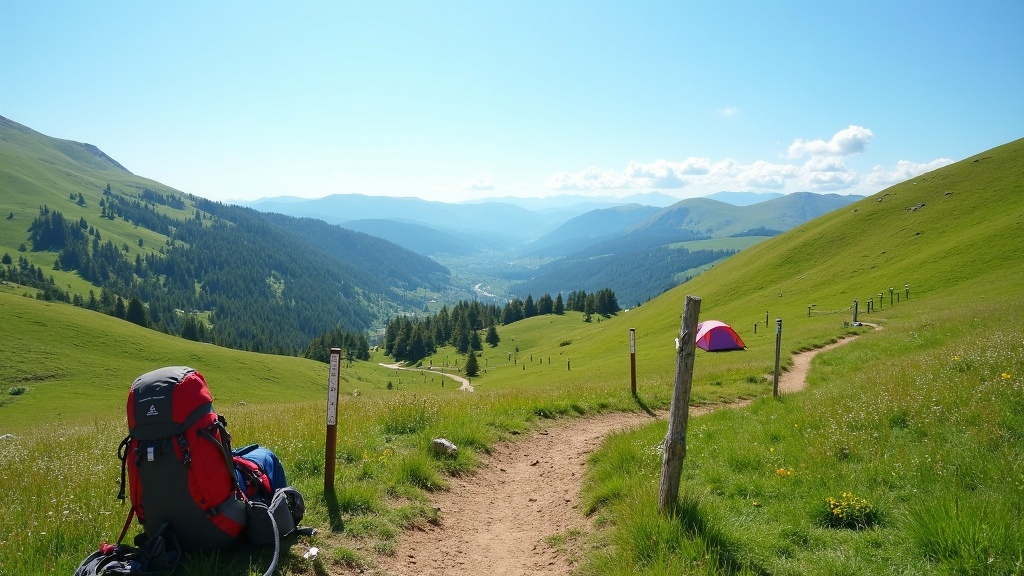The Mammoth March 2026
The Mammoth March 2026 is shaping up to be one of those outdoor adventures that’s both challenging and rewarding. Think of it as a giant group hike with a fun twist and a great sense of accomplishment at the finish line. If you’re interested in long-distance walking events or want to push your own limits in a supportive, high-energy atmosphere, the Mammoth March is worth checking out. In this guide, I’ll break down what to expect, how to get ready, and practical tips for making your March experience enjoyable and memorable.

What Is Mammoth March 2026 and Why All the Buzz?
The Mammoth March is a long-distance hiking event that’s grown popular in the United States, and it’s expanding each year. The idea is simple: you walk a set distance—usually 20 or 30 miles—in a single day, all along scenic, marked trails designed to challenge you while keeping things safe. There’s no running required and no time stress except for the event’s generous finishing window. It’s about endurance, scenery, and community, designed to give you a huge sense of achievement without the stress of a traditional marathon.
The 2026 event is stirring a lot of excitement. More sites are being added, new routes are coming, and event organizers are responding to participant feedback to make it even more walkerfriendly. No matter your age or current fitness, there’s room for you as long as you’re up for the challenge. This event brings out newbies and seasoned hikers alike, keeping things super approachable while offering an exciting twist for anyone looking for something fresh and different.
What Does Participating in Mammoth March Look Like?
So, what actually goes down on the big day? You’ll start early, often right as the sun’s coming up, and set off on a clearly marked trail with hundreds or even thousands of other walkers. The route will typically take you through scenic forests, parks, hills, and sometimes past lakes or rivers. You check in at regular aid stations, which are well-stocked with water, snacks, and a crew ready to help with whatever you need.
- Distance: Most Mammoth Marches are set at either 20 or 30 miles, but there are often shorter options for first-time distance walkers.
- Support: Aid stations pop up every 5 to 7 miles with drinks, fruit, energy bars, and some basic first aid.
- Timing: You’ve usually got 8 to 10 hours to finish, depending on the location. No panic about rushing, but keeping a steady pace is key.
- Atmosphere: Everyone from solo walkers to big crews come out. There’s a supportive, motivating vibe without any fierce competition.
You don’t need to bring your own support team or camping gear, and you won’t have to sweat tricky navigation. The whole event is built to help you stay focused on walking and making memories. People often call it a moving hiking festival because of its unique, communal energy.
How to Get Ready for Mammoth March 2026
Getting prepped for a 20 or 30-mile hike is less intimidating than many people think, especially if you start early and train with intention. Here’s what I’ve found useful for getting both physically and mentally ready:
- Build Your Mileage Gradually: If you aren’t already logging long walks, add a few miles to your weekly total. Aim for at least one longer hike (10+ miles) each weekend in the months leading up to the March. This builds your stamina and helps your feet and legs adapt.
- Break In Your Footwear: Make sure your shoes or boots are well broken in to avoid blisters. Test different socks and footwear combos on your training hikes so you know what keeps your feet happy for the long haul.
- Prepare for All Weather: Weather in spring 2026 could be varied, so mix in walks during sunshine, light rain, or chilly mornings. Practicing in these conditions helps you pick the gear that will serve you best.
- Stay Fueled and Hydrated: Practice eating simple snacks and drinking water during your longest walks. Find what keeps you feeling energized—everyone’s different, so testing ahead is critical.
- Test Your Gear: Use the backpack you plan for the event, check your water reservoir or bottles, and make sure every item is comfortable for hours. Small discomforts can become big problems over a full day.
Top Tips for a Fun Mammoth March Experience
Spending most of a day on your feet can be tough, but a few smart strategies will help you have a blast and sidestep the worst pitfalls. Here are some things I learned (sometimes the hard way):
- Pace Yourself: The crowd’s excitement is contagious, but don’t get swept away at the start. Set your own steady pace.
- Manage Blisters Early: At the first sign of a hot spot, pull off your sock and put on a blister pad or tape. Acting fast keeps little annoyances from turning into major pain.
- Try Trekking Poles: If you ever have knee pain or want extra stability, these tools offer support—especially on uneven paths or steep hills.
- Bring Lightweight Layers: Mornings can be chilly while afternoons may get warm. Clothing that dries quickly and breathes well will keep you comfortable all day.
- Keep Spirits Up: Chat with fellow walkers, soak up the scenery, and stay present. If you hit a wall, someone nearby is almost always ready with encouragement or a few jokes to give you a boost.
Challenges You Might Encounter (and How to Handle Them)
No outdoor adventure is free of roadbumps, but a little preparation helps you overcome almost anything the March may throw your way:
- Fatigue and Sore Muscles: Expect some tiredness, especially late in the day. Eat a solid breakfast, keep snacking, and take short breaks as needed. Don’t forget to stretch before, during, and after your walk to ease up muscle strain.
- Mental Slumps: Walking for hours can get tedious. Music, breaking up your journey into segments, and walking with a buddy can all keep your mind fresh and your motivation steady.
- Unpredictable Weather: Check the weather forecast a few days out and pack for a range of conditions. A light waterproof jacket and some layers will go a long way.
- Gear Issues: Sometimes a shoelace snaps or a water bottle leaks. Bring backups if you can, or link up with another person for emergency supplies on the spot. Community support is always strong at these walks.
The Value in Finishing—No Matter Your Speed
One of the coolest things about Mammoth March is that crossing the finish line is treated as a major win for every participant, no matter your timing. Finishers score a medal, snacks, cheering volunteers, and a wonderful sense of achievement for following through. It’s much more about satisfaction and personal challenge than how fast you move.
Common Questions About Mammoth March 2026
If you’re new to big-distance walking events, you probably have a few questions about what to expect. These are some that show up often before every Mammoth March:
What kind of training do I really need?
Walking a few days a week, with one longer outing mixed in, gets you ready. Focus on becoming comfortable with time on your feet, not speed or setting personal distance records in training.
Is it okay to come solo?
Definitely. Many people arrive solo, but the shared adventure makes meeting people easy. The event’s community vibe makes newcomers feel welcome and part of the group right away.
What if I can’t finish the whole route?
No stress! Sweep vans and staff are there to support anyone who needs to step off the route. You still head home with new experience and a new sense of accomplishment.
Do I need fancy gear?
There’s no need for expensive equipment. Good walking shoes, weather-appropriate layers, a basic daypack, and a sturdy water bottle cover almost all situations.
Key Gear to Bring for the March
Comfort and safety matter more than anything in long-distance walks. Here’s what helps most for the Mammoth March 2026:
- Reliable Footwear: Trail runners or tough walking shoes that you’ve already spent time in.
- Padded Socks: For extra comfort, and a backup pair is smart for mid-day changes.
- Basic Daypack: Just big enough for water, snacks, an extra layer, and a basic first aid kit.
- Trekking Poles (Optional): Superb for balance and support, especially over hilly or bumpy ground.
- Sun Protection: Even on cool or cloudy days, don’t overlook a hat, sunglasses, and sunscreen.
Sorting out your comfort pack before the big day means you’ll spend less time worrying about blisters or gear hiccups and more time enjoying your adventure.
Why People Keep Coming Back to Mammoth March
After speaking with repeat Marchers, there’s a shortlist of reasons they come back year after year: the strong sense of community, the beautiful and ever-changing routes, and the unbeatable feeling after finishing a long walk. The event forms a welcoming, friendly space for both newcomers and experienced hikers to jump in.
Before long, Mammoth March becomes less about finishing and more about the folks you meet, the mental clarity that time outdoors can bring, and knowing you can go farther and do more than you thought possible. As the 2026 event approaches, it’s obvious the Mammoth March movement continues to inspire walkers everywhere—and maybe, it’s time you took the plunge too.

Leave a Reply